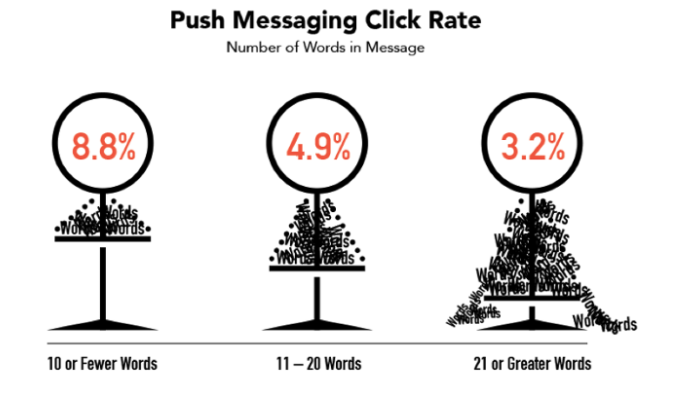What exactly is a push notification? It’s a message that appears on your screen, similar to a text message, but it comes from an app. Send personalized content So now that you know how long to make your push notifications, it’s time to talk about the content and reasoning behind sending them. Just make sure that you send it out at an appropriate time. Users don’t have to keep the app open and track the location of their drivers. With that said, iOS users open their push notifications at a rate that’s seven times faster than users with an Android device. Although geofencing is a great marketing strategy, you don’t want to go overboard. Conclusion Push notifications are a great way to improve sales from your mobile app. Don’t send push notifications too often. What types of push notifications are you sending to your mobile customers?
It’s no secret that our world is trending in a mobile direction.
As a marketer, you need to recognize this concept and adapt accordingly. Your customers are using their mobile devices to consume, so that’s where you need to target them.
For those of you out there who developed a mobile app, you’re already heading in the right direction.
In fact, without the app as a platform, you won’t be able to use push notifications as a marketing tactic. But this doesn’t mean that you shouldn’t continue reading if you don’t have a mobile app.
While you may not be able to implement this strategy right now, you’ll be able to do so once your app launches.
Let’s start with the basics. What exactly is a push notification?
I’m sure you’ve seen these before, probably on your own mobile devices, even if you didn’t know what they were called. It’s a message that appears on your screen, similar to a text message, but it comes from an app.
This is a great opportunity for you to share information, provide updates, and stay in contact with users who have your app downloaded to their devices.
But with great power comes great responsibility. Overloading on these messages could backfire, which I’ll explain in greater detail as we continue.
Use a limited number of words
It’s important that you clearly understand the difference between texts and push notifications. Even though they are similar and look the same on the screen, they are extremely different.
For example, when someone sends you a text message, the opening lines of the text will appear on your home screen. When you open up the message, you’ll see the full text.
But that’s not the case with a push notification.
When a user opens up a push notification, it brings them to the app, but the message is gone. So if your push notification is too long, part of it may get cut off, and the user won’t even know what you’re trying to say to them.
To prevent this from happening, it’s best to use as few words as possible when crafting your messages. That’s why shorter push notifications are more effective.

So while you won’t have as much liberty with your word count as you would with a text message, push notifications are still very effective.
SMS messages from businesses can be perceived as spam. But with a push notification, they know exactly where it’s coming from since the app is installed on their device.
Plus, it’s free for users to receive a push notification. But they may have to pay for incoming SMS messages, depending on their plans.
Unsolicited SMS messages are also illegal, so overall, it’s best to just stick with push notifications and keep the word count low to ensure that your entire message gets displayed on the screen.
Send personalized content
So now that you know how long to make your push notifications, it’s time to talk about the content and reasoning behind sending them.
If you just want to say hello and remind your customers who you are, push notifications are not the way to do this.
It’s annoying and will end up hurting you instead of helping, but we’ll talk about that in greater depth shortly.

As you can see from these numbers, your best bet is to stick to content that’s relevant and personalized to the user.
Here some ideas to help you segment your audience so you can deliver content that’s tailored to each user.
- gender
- location
- age
- interests
- browsing history
- purchase history
You’ve got lots of options to choose from.
For example, let’s say your company will be attending an industry event in South Florida. It wouldn’t make sense to send that notification to everyone in the United States who has your app.
Realistically, people aren’t going to travel for something like that. So it’s a waste for you to send something irrelevant to them.
But you could definitely send that notification to app users who live in Florida, especially if you’re offering them an incentive or exclusive offer for attending the event.
This type of push notification is personal and adds value to the recipient.
Don’t be annoying
As I’ve said a few times already, you need to tread carefully with your push notification strategy.
Sending too many push notifications or irrelevant messages will backfire. That’s because users have the option to opt-in and opt-out of your messages.
That’s right. If you annoy a user, they will simply mute your notifications. People already have predetermined feelings about these messages. In fact, 52% of app users say that push notifications are an annoying distraction.
Once you get muted, it’s going to be nearly impossible for you to get the user to turn notifications back on.
You won’t have a way to contact them unless you send them an email. But sending…

COMMENTS